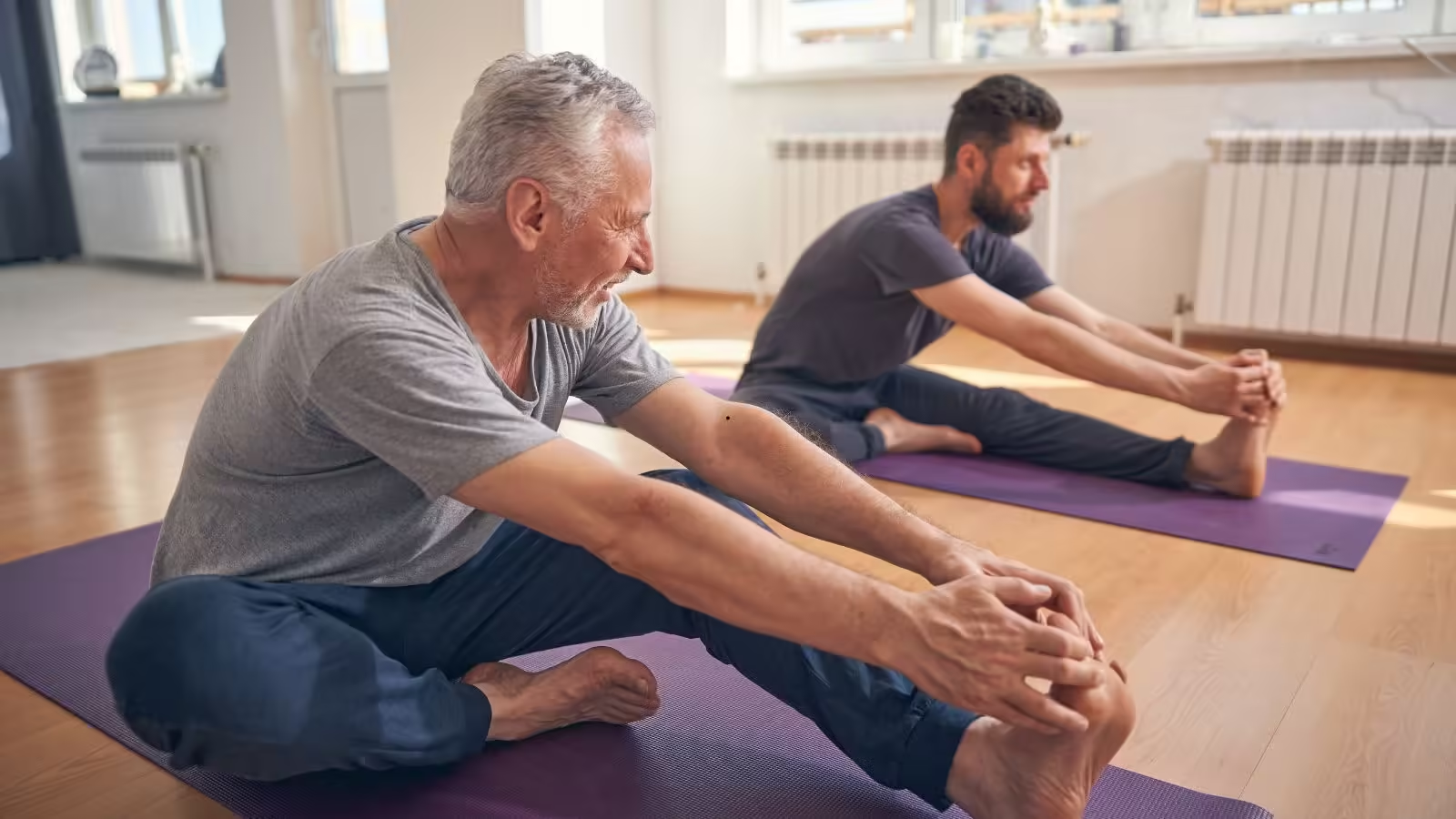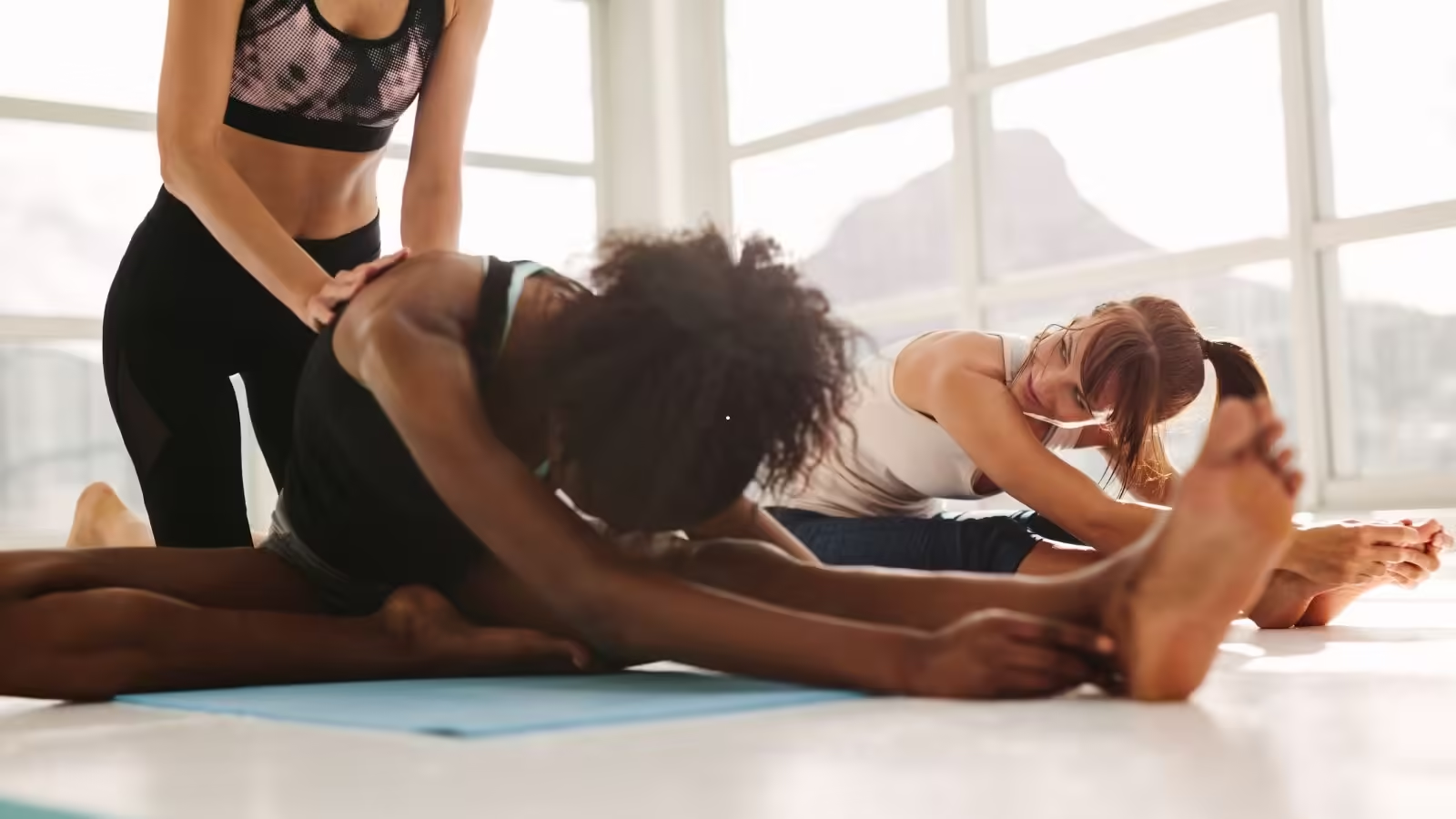Yoga is more than just an exercise routine; it’s a holistic practice that has been around for thousands of years. Originating in ancient India, yoga combines physical postures, breath control, meditation, and ethical principles to create a balanced and fulfilling lifestyle.
The poses, known as “asanas,” are designed to improve physical health, mental clarity, and emotional stability.
Why Start Yoga?
Physical Benefits
Improved Flexibility and Posture
When you practice yoga consistently, you’ll notice an increase in your flexibility. Postures that initially seemed challenging will become easier, and your muscles will stretch and lengthen. This flexibility extends to your daily life, improving how you move and stand.
Strength Building and Muscle Tone
Yoga isn’t just about stretching; it also builds strength. Poses like Warrior I and Downward Facing Dog engage multiple muscle groups, helping to increase muscle tone and endurance.
Mental Benefits
Stress Reduction and Relaxation
One of the most immediate benefits of yoga is its ability to reduce stress. The combination of physical movement and breath awareness helps to calm the nervous system, promoting relaxation and reducing anxiety.
Enhanced Mindfulness and Mental Clarity
Yoga encourages a state of mindfulness, where you focus on the present moment. This practice can enhance mental clarity and concentration, making it easier to manage daily challenges with a clear mind.
Preparing for Your Yoga Journey
Setting Up Your Space
Choosing a Quiet and Comfortable Space
Find a quiet corner in your home where you can practice without interruptions. A clutter-free environment helps to create a calming atmosphere.
Gathering Necessary Equipment
You’ll need a few basic items to get started:
- A yoga mat for comfort and grip.
- Blocks and straps for support and flexibility.
- A water bottle to stay hydrated.
Understanding Basic Yoga Principles
Breath Awareness
Breath control, or “pranayama,” is a fundamental part of yoga. Focusing on your breath helps to synchronize your movements and enhances the overall experience.
Mindfulness
Being present during your practice is key to reaping the full benefits of yoga. Pay attention to how your body feels in each pose and adjust as needed.
Essential Yoga Poses for Beginners

Mountain Pose (Tadasana)
Alignment and Posture Tips
Stand tall with your feet hip-width apart. Distribute your weight evenly and engage your core. Lift your chest and relax your shoulders.
Benefits for Grounding and Posture Awareness
Mountain Pose helps to improve posture and balance. It’s a great pose to start with, as it sets the foundation for other standing poses.
Downward Facing Dog (Adho Mukha Svanasana)
Step-by-Step Guide
Start on your hands and knees, then lift your hips towards the ceiling, forming an inverted V-shape. Keep your hands shoulder-width apart and feet hip-width apart.
Benefits for Stretching and Strengthening
This pose stretches the hamstrings, calves, and shoulders while strengthening the arms and legs.
Warrior I (Virabhadrasana I)
Proper Alignment and Variations
Step one foot forward and bend your front knee. Extend your back leg and reach your arms overhead. Ensure your front knee aligns with your ankle.
Benefits for Strength and Focus
Warrior I builds strength in the legs and core while improving focus and concentration.
Tree Pose (Vrksasana)
Balancing Techniques and Modifications
Stand on one leg and place the sole of your other foot on your inner thigh or calf. Bring your hands together at your chest or stretch them overhead.
Benefits for Balance and Concentration
Tree Pose enhances balance and stability, promoting mental focus and calmness.
Child’s Pose (Balasana)
Relaxation and Stress Relief Techniques
Kneel on the floor, sit back on your heels, and stretch your arms forward. Rest your forehead on the mat and breathe deeply.
Benefits for Stretching and Relaxation
Child’s Pose gently stretches the back, hips, and thighs while promoting relaxation and stress relief.
Breathing Techniques (Pranayama)
Introduction to Basic Pranayama Techniques
Ujjayi Breath
Inhale deeply through your nose and exhale through your nose, creating a soft sound at the back of your throat.
Deep Belly Breathing
Place one hand on your belly and the other on your chest. Inhale deeply, filling your belly with air, and exhale slowly.
Benefits of Integrating Breath Work
Combining pranayama with yoga poses enhances the overall practice. It helps to calm the mind, increase oxygen flow, and improve focus.
Practicing Safely
Listening to Your Body
Pay attention to your body’s signals. If a pose feels uncomfortable or causes pain, back off and modify it. Yoga should never hurt.
Using Props and Modifications
Props like blocks and straps can make poses more accessible. Don’t hesitate to use them to support your practice.
Practicing Mindfulness
Stay present during your practice. Focus on your breath, body sensations, and the alignment of each pose.
Building a Consistent Practice
Establishing a Routine
Set aside a specific time each day for yoga. Consistency helps to build a habit and deepen your practice.
Setting Achievable Goals
Start with small, achievable goals. Track your progress and celebrate your achievements, no matter how small.
Overcoming Challenges
Stay motivated by reminding yourself of the benefits of yoga. If you encounter obstacles, seek support from the yoga community.
Wrapping Up
Yoga offers a path to physical and mental well-being. By incorporating the beginner-friendly poses and tips discussed, you can confidently start your yoga practice. Remember, the transformative power of yoga lies in regular training and mindfulness. Start your yoga journey today and experience the benefits for yourself.
FAQs on Yoga for Beginners
How often should beginners practice yoga?
Aim for at least 3-4 times a week to see noticeable benefits.
What should I wear for yoga practice?
Wear comfortable, breathable clothing that allows for a full range of motion.
Can yoga help with weight loss?
Yes, yoga can aid in weight loss by increasing metabolism and promoting mindful eating.
Are there specific yoga poses for back pain relief?
Poses like Cat-Cow, Child’s Pose, and Downward Facing Dog can help alleviate back pain.
What time of day is best for yoga practice?
You can practice yoga any time of day, but morning practice can set a positive tone for the day.
Should I eat before or after yoga practice?
It’s best to practice yoga on an empty stomach. Eat a light meal at least 2 hours before practicing.
Can yoga be practiced during pregnancy?
Yes, but it’s important to modify poses and consult with a healthcare provider.
What are the benefits of yoga compared to other forms of exercise?
Yoga improves flexibility, strength, and mental clarity, offering a holistic approach to wellness.
How long does it take to see improvements in flexibility with yoga?
With consistent practice, you may notice improvements in flexibility within a few weeks.
What if I’m not flexible enough to do yoga?
Yoga is for everyone, regardless of flexibility. Start where you are and progress at your own pace.




